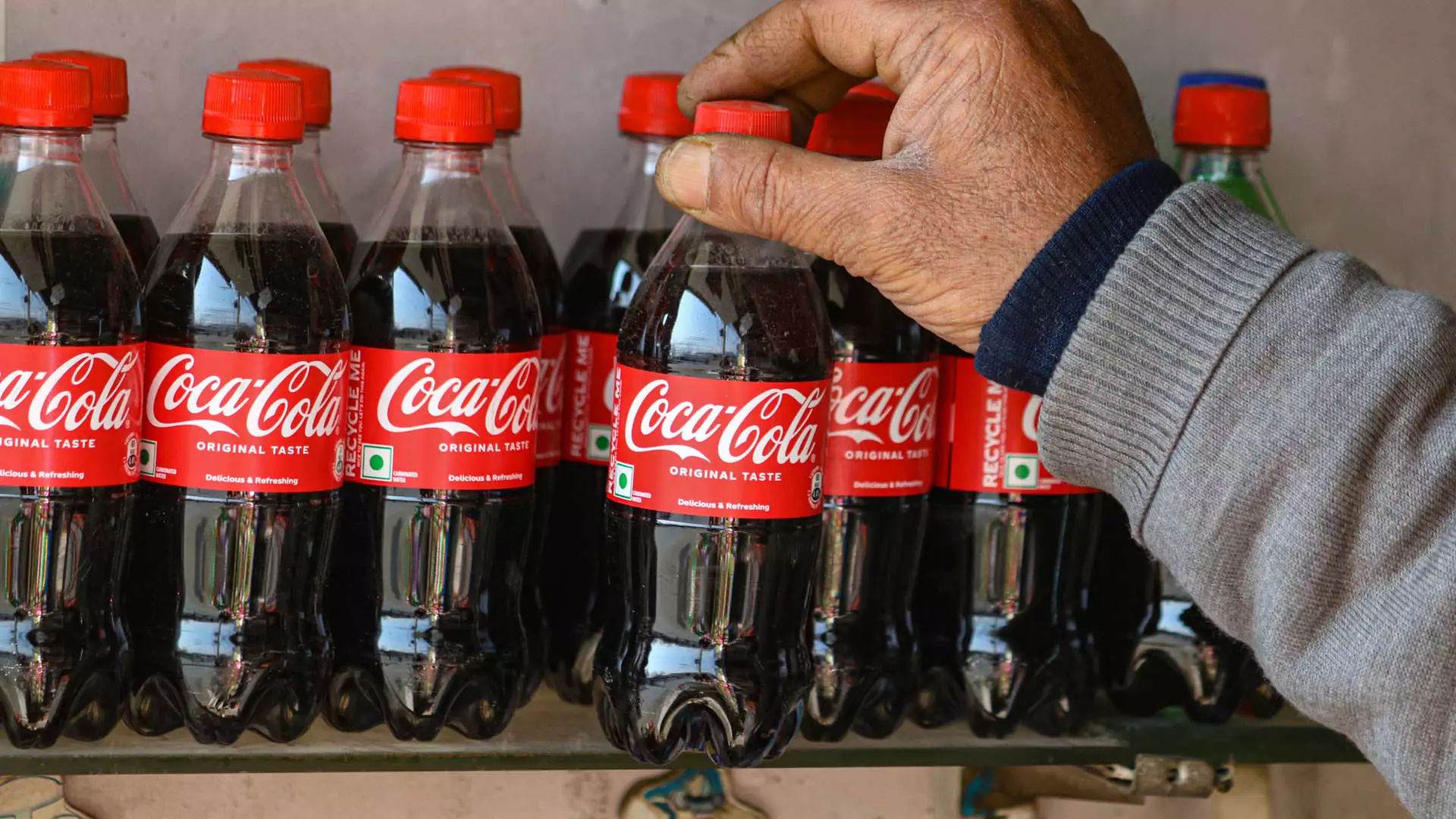In a bold statement during an earnings conference call, Coca-Cola’s CEO James Quincey outlined the company’s potential strategic shift in packaging as a response to new tariffs imposed by the Trump administration. With tariffs on imported aluminum and steel set to rise from 10% to 25%, Quincey’s comments serve as a crucial insight into how global trade dynamics can influence corporate supply chain decisions. The company’s contingency plan involves a transition from aluminum packaging to plastic bottles, specifically polyethylene terephthalate (PET), which can provide a buffer against rising costs for aluminum. This move underscores Coca-Cola’s broader strategy to maintain price competitiveness in an increasingly challenging market environment.
President Trump’s decision to increase tariffs is perceived as a strategic move primarily directed at China, even though the U.S. imports relatively little steel from that country. Quincey’s assurances downplayed the financial ramifications for Coca-Cola, indicating that while tariffs may impose additional costs, they would not dramatically disrupt the company’s vast operations. Notably, Quincey mentioned that the beverage giant sources some aluminum from Canada, hinting at the complexities of global supply chains. His statement that the packaging segment constitutes a small fraction of Coca-Cola’s overall costs suggests that the company is well-equipped to absorb some of these increases while maintaining its market position.
The pivot toward plastic bottles highlights a tension between cost considerations and sustainability commitments. Traditionally, aluminum packaging has been favored for its recyclability; it boasts a recycling rate exceeding 50%, significantly higher than the 29.1% rate of PET bottles in 2018. This disparity raises questions about Coca-Cola’s long-term environmental strategy and its recently revised sustainability goals. Early this year, the company made headlines by scaling back its ambition to use 50% recycled materials in packaging by 2030, now aiming for only 35% to 40% by 2035. This retreat from aggressive sustainability targets aligns with Quincey’s assertion that market realities necessitate a more flexible approach to product packaging.
Coca-Cola’s challenges are compounded by its persistent reputation as one of the largest plastic polluters globally, a title it has held for six consecutive years according to Greenpeace. This juxtaposition of increasing usage of single-use plastics against earlier commitments to sustainability raises critical ethical questions. Critics argue that the company’s choices reflect a conflict between economic interests and environmental responsibilities. The industry’s reliance on plastic, despite its advantages in cost efficiency, threatens to undermine public confidence and compliance with broader regulatory frameworks aimed at reducing plastic waste.
In addition to the proposed shift to more PET packaging, Quincey outlined potential counter-measures to mitigate the impact of tariffs, including sourcing aluminum domestically and possibly raising product prices. Coca-Cola’s adaptability in facing economic challenges showcases its operational resilience, yet the increased emphasis on plastic could alienate environmentally conscious consumers. The company’s strategy moving forward must carefully balance profitability with genuine commitment to sustainability.
With increasing scrutiny on environmental practices and mounting consumer demand for sustainable options, Coca-Cola’s actions in the coming years will be pivotal. The ability to innovate packaging solutions while addressing the challenges posed by national and global economic policies will determine not only the company’s market success but also its role as a responsible corporate citizen committed to sustainability. As Coca-Cola navigates the implications of the tariff regime, it stands at a crossroads, with significant ramifications for its brand image and operational integrity.

